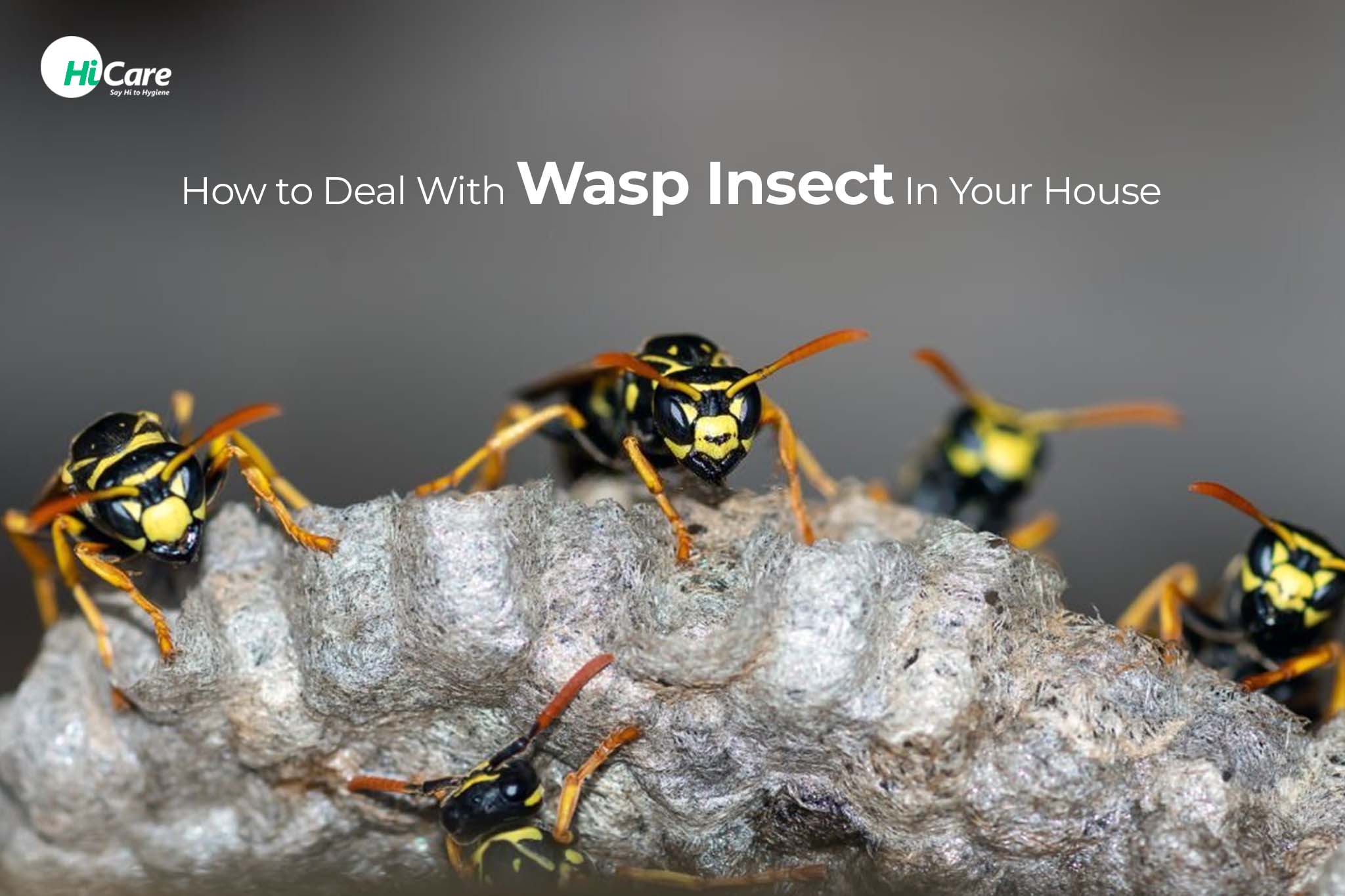“Wasps” refers to any insect belonging to the Hymenoptera order (suborder apocrine). Hornets and yellow jackets are the most commonly known wasps (yellow wasps). Wasp insects pollinate and benefit the environment, but they can be violent when they come into contact with humans. The key to wasp control is to remove wasp insect nests before they become too large. There are some natural wasp pest control options. Because there aren’t enough chilly days for wasps to die naturally due to climate change, their number has exploded.
A wasp nest is more likely to be found in an area where the nest may be built in peace and where workers and hunters can leave and return to the queen easily.

6 Common Place for Wasp Nesting
- Wall cavities
- Roof spaces
- Birdhouses
- Lofts
- Sheds
- Garages
A wasp’s behaviour is usually determined by where it is in its lifecycle, which is separated into four stages.
4 Stages of Wasp Life Cycle
1. Hibernation
This occurs between the end of September and the end of April the following year, and is when a high number of wasps die of famine (not the low temperatures). Only a few queens will be able to create new colonies during this time. If the queen has been hiding within a residence, her emergence may cause homeowners to hire exterminators, believing that they have a nest in their home. However, this is unlikely to be the case.
2. Colony Founding
This occurs from the end of April through the beginning of May. This is when the queen begins to feed herself and create her nest, where she will deposit her first set of eggs.
3. Colony Growth
This occurs between the end of May and the end of November, and the nest grows in size when the first drones hatch and begin working.
4. Procreation
This occurs throughout the summer and early autumn, and involves the queen’s sexual descendants (normal males and females she has turned into queens) mating to ensure the colony’s survival through the winter. The grubs that worker wasps have been surviving on within the nest begin to die at this stage, pushing them to seek alternative food sources, which is when they become a more noticeable nuisance to humans trying to eat outside. Exterminators are typically called at this point.
Wasps buzz in and out of people’s yards or windows, looking for an opportunity to enter your home. Keep meals, liquids, particularly sweet liquids, covered and the area clean of debris. Wasps are attracted to sweets, nectars, syrups, and scents. Wasp insects will try to build nests in broken sidings and crevices or cracks in walls, therefore they should be fused and sealed. To keep wasps out, make sure your screens, windows, and doors are “chink or hole-free.” Paper wasps will be deterred by decorative “decoy wasps.”
3 Ways to Keep Wasps Out
- Plants that repel wasps include spearmint, thyme, citronella, eucalyptus, and wormwood. These plants keep wasps and other insects at bay while also adding beauty to your landscape.
- Peppermint oil should be applied to cotton pads strategically placed near windows, ledges, cracks, or porches (verandahs or balconies). They despise the fragrance of mint!
- Wasp-repellent blend: a combination of lemongrass, clove, and geranium essential oils repels worker wasp insects from starting a new colony (wasp nest). To get rid of wasps, mix a few drops of each essential oil with a few squirts of dish soap in a spray bottle filled with water.
How to Prepare A Wasp Trap
Cut the top off a 2-liter container and slide it into the bottom to make your own wasp bug control trap. Attract the wasps with a tasty reward like sugar water; once inside, they won’t know how to get out. They’ll be imprisoned and will perish! This is how you make a wasp trap. Cut the top off a 2-liter bottle first. Remove the bottle cap and insert the neck-end of the bottle into the bottle aperture you just cut upside-down.
Use packing tape or duct tape to secure it. Make a sugar-water solution to bait the trap. Both beer and cola are delicious. Apply a small amount of cooking oil to the trap’s outer rim to help the wasps slide inside the bottle. To catch the wasps, hang the trap. When you’re ready to empty it, kill the bugs with hot water.
Tips for Removing A Wasp Trap Safely
Wasp nests (wasp insect hives) are extremely dangerous to remove, hence it is strongly advised that you engage an experienced professional to conduct the work. If you want to do it yourself then follow this precautions:
- Have a wasp-sting allergy test performed by your doctor.
- Always wear heavy protective clothing.
- Plan an escape route to avoid wasp swarms. Adding 2 tablespoons of dish soap to a spray bottle of water and spraying small hanging nests with full force is the most environmentally friendly method. They will die instantly because they will be unable to breathe.
Experts can “drown” aerial nests; amateurs should avoid this. You cover the nest with a cloth bag and pull it free, then submerge it. For wasp nest removal, it is strongly advised to obtain professional assistance.
Lighting a small fire immediately underneath a wasp nest and smoking the wasps out is another approach for wasp management. They will choke and die, and any leftover wasps can be killed with a spray bottle of soapy water. This method works on aerial nests in the outdoors (trees or gardens). Not at home, or you risk starting a fire and causing a major disaster.






